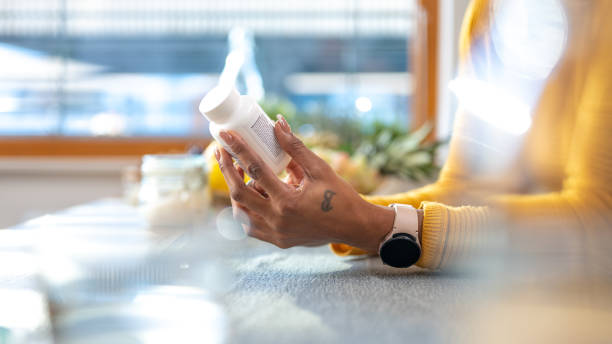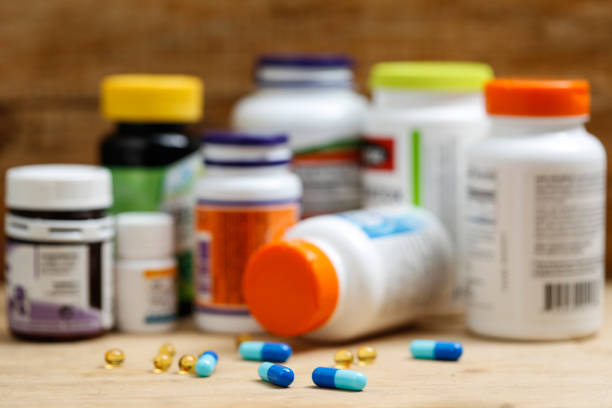
Why Making Smart Supplement Choices Matters
In today’s fast-paced world, many people struggle to get all the nutrients they need from diet alone. Busy schedules, processed foods, and lifestyle habits can create gaps in essential vitamins, minerals, and other nutrients. This is where supplements play a pivotal role. But not all supplements are created equal, and making the right choices can make a significant difference in achieving health and wellness goals.
Consider an individual trying to improve immunity while managing a hectic work routine. They may hear about multiple supplements online—vitamin C, zinc, probiotics—but without proper guidance, it’s easy to choose ineffective or even harmful products. Choosing supplements without understanding your body’s unique needs can lead to wasted money, minimal health benefits, or unintended side effects.
Smart supplement choices involve a balance of scientific knowledge, personal health assessment, and an understanding of high-quality products. It is not about taking every trending pill; it’s about selecting the right nutrients in appropriate dosages, at the right time, and from reliable sources.
A truly effective approach begins with evaluating your lifestyle, diet, and specific health goals. Are you looking to boost immunity, improve energy levels, enhance mental clarity, or support bone and joint health? Each goal may require a different supplement strategy. A well-chosen supplement complements your diet, fills nutritional gaps, and supports long-term wellness.
Moreover, selecting a supplement is not just about the nutrient content. Quality, safety, bioavailability, and manufacturing standards play a crucial role in determining whether a product actually delivers on its promises. Regulatory compliance, certifications, and third-party testing help ensure reliability and efficacy.
Ultimately, smart supplement choices are a combination of informed decision-making, professional guidance, and awareness of your personal health needs. In the next sections, we will explore how to evaluate supplements, choose the right products, integrate them into your daily routine, and avoid common pitfalls. By understanding these principles, individuals can maximize the benefits of supplementation while safeguarding their health.

Key Considerations for Choosing the Right Supplements
How to Make Informed Supplement Choices
Before purchasing any supplement, it’s essential to evaluate multiple factors that determine safety, effectiveness, and suitability. A well-informed approach ensures that the nutrients you take are absorbed efficiently and support your health goals. Consider the following eight factors when choosing supplements:
- Assess Your Nutritional Needs
Start with an understanding of your current diet, lifestyle, and health conditions. Nutritional gaps vary based on age, gender, activity level, and existing medical conditions. Consulting a healthcare professional or nutritionist can help identify specific deficiencies that need supplementation.
- Identify Health Goals
Determine whether your focus is immunity, energy, cognitive function, bone strength, or overall wellness. Different supplements target different outcomes. For instance, omega-3 fatty acids benefit heart and brain health, while calcium and vitamin D support bone density.
- Research Scientific Evidence
Not all supplements are backed by research. Look for products supported by clinical studies that demonstrate efficacy for the intended health benefit. Avoid products making exaggerated or unproven claims.
- Evaluate Dosage and Bio
availabilityThe effectiveness of a supplement depends on its dosage and the body’s ability to absorb it. Check labels for recommended daily amounts and forms that improve absorption, such as chelated minerals or liposomal vitamins.
- Check for Safety and Interactions
Consider potential interactions with medications, other supplements, or pre-existing conditions. High doses of certain nutrients, like iron or vitamin A, can be harmful. Safety information and professional guidance are crucial.
- Quality and Manufacturing Standards
Choose supplements from reputable brands that follow Good Manufacturing Practices (GMP) and have third-party testing. Certifications, ingredient transparency, and batch testing ensure product reliability.
- Avoid Unnecessary Additives
Many supplements contain fillers, artificial colors, preservatives, or allergens. Opt for products with minimal additives, clean ingredient lists, and allergen-free formulations to reduce risk of side effects.
- Consider Cost vs. Value
Expensive supplements do not always guarantee better quality. Focus on products that balance affordability with proven efficacy, certifications, and bioavailability. Avoid overly cheap alternatives that may compromise safety.
By carefully considering these factors, individuals can choose supplements that truly complement their health goals, optimize nutrient intake, and minimize risks. A strategic approach reduces unnecessary expenditure while maximizing health benefits.
Integrating Supplements into Daily Life
Practical Steps to Incorporate Supplements Effectively
Choosing the right supplement is only half the journey; proper integration into your daily routine ensures optimal results. Consistency, timing, and combination with a balanced diet significantly influence supplement effectiveness. Supplements are not replacements for healthy meals—they are tools to fill gaps and enhance nutrient intake. Understanding how to incorporate them correctly can prevent misuse, improve absorption, and support long-term wellness goals.
Timing and Combination Strategies
- Morning vs. Evening Intake- Certain vitamins, like B-complex and vitamin C, are better absorbed in the morning with food, while magnesium or melatonin may be more suitable in the evening. Timing affects absorption, efficacy, and how the supplement interacts with your body’s natural rhythms.
- With Food vs. Empty Stomach- Fat-soluble vitamins (A, D, E, K) require dietary fat for proper absorption. Water-soluble vitamins and minerals may be absorbed better on an empty stomach but can sometimes cause gastrointestinal discomfort. Understanding each supplement’s requirements is key.
- Combining for Synergy- Some nutrients enhance each other’s effectiveness. For example, vitamin D improves calcium absorption, while vitamin C can enhance iron uptake. Strategically combining supplements can maximize their benefits.
- Avoiding Interference- Some supplements can interfere with each other’s absorption. For instance, calcium may inhibit iron absorption if taken simultaneously. Staggering doses ensures optimal uptake and avoids negative interactions.
Practical Tips for Daily Integration
- Set a Routine- Incorporate supplements into daily habits like breakfast or evening wind-down routines to maintain consistency and reduce missed doses.
- Monitor Effects- Keep track of energy levels, sleep quality, digestion, and overall wellness after starting supplements. Monitoring outcomes helps identify effectiveness and informs future adjustments.
- Adjust as Needed- Nutritional needs may change over time due to age, lifestyle, or health conditions. Periodically reassess your supplement regimen and make changes accordingly.
- Professional Guidance- Regular consultations with healthcare professionals ensure safe, effective supplementation. They can adjust dosages, recommend combinations, and prevent adverse effects.
By following these strategies, individuals can maximize the benefits of supplements, maintain a balanced nutrient intake, and support long-term health goals. Proper integration ensures supplements complement rather than replace a healthy lifestyle.